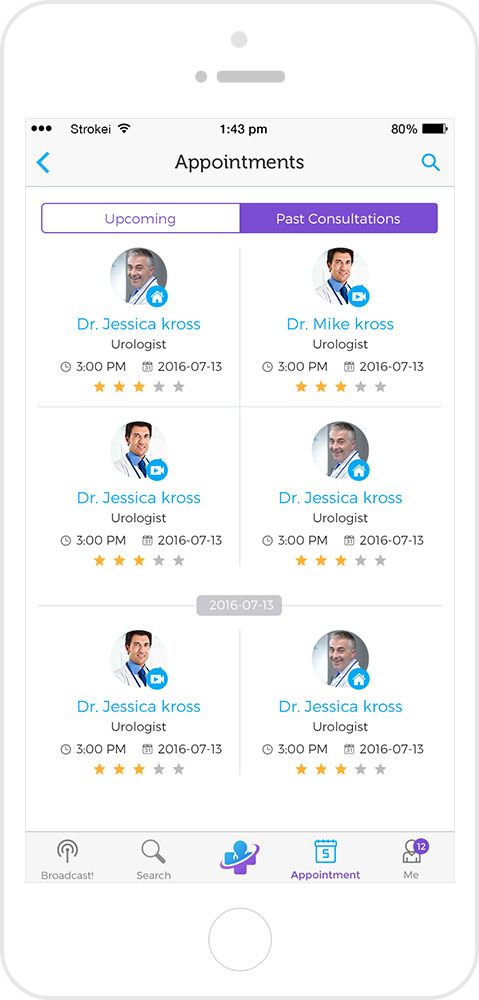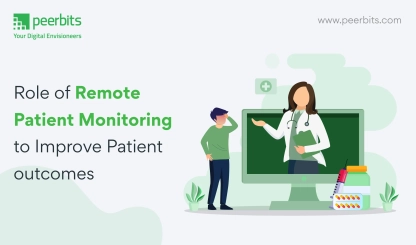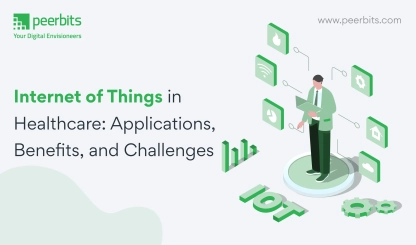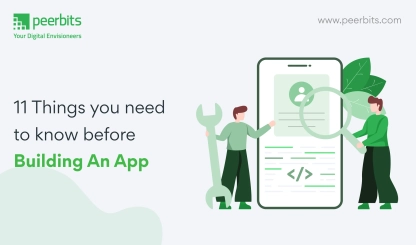Mobile healthcare application market is expected to boom by 2020 and will be worth more than $84,817 million.

One can expect a smart, mobile-powered solutions for improved patient care, efficient record maintenance, high level of data security, enhanced interpersonal communication and a resourceful healthcare training and innovation.
These changes are already slow-transforming the working and advancements of the healthcare industry.
One can sense that the term “revolution” is applied a little too copiously to new technological innovations.
However, at the same time is important to witness the technological advancements regarding improving mobility and ultimately revolutionizing the way people access to the information.
Such technology advancements are rapidly gaining momentum in the health management sector as mobile devices endure their consumer market penetration.
A couple of years back, nearly 80% doctors were using a smartphone or tablet for work-related tasks.
This clearly signifies the dependency of medical professionals on the smart devices and these figures are bound to rise over a period.
The usage of smart devices is not only limited to the patients and medical professionals, but it is also deployed for the well-functioning of healthcare lifecycle.
The ultimate aim for any entities dealing with healthcare has a patient in focus.
Moreover, this is the reason why technology advancements, when benefits these participating entities, also helps patient in longer run.

Technology enhances healthcare facilities
One of the core reason how technology revolutionizes healthcare industry is by improving healthcare services for patients.
In the U.S itself, over 46 million people are living in rural counties (2014), that nears to almost 15% of the total population.
Distances to regional healthcare centers can cause a significant problem to this set of population.
Here, EMS (Emergency Medical service) professionals can incorporate mobile technology to input data that is sent straight to the receiving hospital before the patient’s arrival so that patients are attended immediately, minimizing the traditional paperwork tasks.

Comprehensive EMS data collection
People are well equipped with the know-how of paper patient care procedures, and reports are aware of how the way of interpreting the information from the paper reports can be tedious and regularly brings about problematic and mistaken information.
Innovation in mHealthcare certainly leads to a better data collection and helps to create immediate reports.
All these contribute to enhancing healthcare facilities for the patients.
Clear and brief data assembling and real-time data access will generate better performance.
Offices can likewise enhance the nature of healthcare by a more productive business process by infusing more streamlined quality control frameworks.
The mobile data reflects a real sense of healthcare, reflecting the quality of healthcare such that it can validate hospital grants and funding.
Utilizing EHR for better patient care
EHR (Electronic Health Record) can retrieve fast lab results that save a great deal time and money – ultimately utilizing the resources optimally.
A better patient care is guaranteed as minimizing duplicate tests can end up saving patient’s money and time.
An EHR mechanism is highly useful in keeping up to date information about the patients handy.
Incorporating mechanized patient request lessens the data duplicity and thereby saving duplication testing expense by 13%.

Incorporating EHRs in hospitals and clinical assistance labs can reduce redundant paperwork and at the same time have the tendency to merge with the billing program to submit claims automatically.
mHealthcare eliminates the traditional procedures of generating the results from a lab and sending it back to the patient using in the same old manner.
Integrating mHealthcare within the medical work front reduces the tasks of an office clerk, nurses or caretakers, and physician.
Patients need not hold or stay up on the telephone to play a phone tag.
HER helps in forwarding lab results via secured messaging or utilizing the existing portal for communicating vital information to patients.
EHRs are highly useful to harness productivity by using templates cautiously.
Managing patients in a productive manner
Incorporating technology in healthcare allows EHRs to point and click the patient’s historical records to save the time in knowing patient history.
A few EHR organizations additionally offer a centralized zone for all doctor endorsements along with signatures of lab work, remedies, and so forth.
This ought to enhance workflow by eradicating manual processes of pulling different patients health charts or enter numerous EHR modules physically
Timely medications and systemized processes
Digital medical system allows active patient engagement and appropriate medications.

Plenty of studies reflects benefits of EHR and e-prescription that helps patients to adhere medication regimes and timely doctor appointment better.
There’s a study by New England Healthcare Institute that reflects patients spending for about $290 billion (annually) as preventable medical for not following the directed medications in the US itself.
Integrating mHealthcare and proliferating mobile applications into the daily lives of patients can make them more consistent with their medications, and doctors managing e-prescription can better the results and lower the recovery time and cost of care.
Plenty of patient-centric functions can be added by medical practitioners and hospitals alike to increase patient-trustworthiness.
It includes new healthcare models like pay-for-performance, patient specific medical home model, along with the accountable care organizations.
Patients can embrace technology for aggregating report results and medical bills for receiving reimbursements.
Read More: How healthcare mobile apps help doctors and patients
Wearables:
Today there are a lot of wearable devices available that can sync with your mobiles and tablets.
Wearables like glasses, Fitbit, and glasses etc are useful in tracking one’s personal wellness.
These wearables can be very well integrated with various healthcare apps to provide optimum results.
For example, HexCare aggregate is a wearable that is responsible to collect the data and represent it on the dashboard to show the precise results of one’s health status.
Extending Rural Access:
The biggest challenge for the healthcare sector in the entire world is to provide healthcare services to the rural areas.
Every nation including the developed ones have disparity when it comes to the healthcare services in the urban and the rural areas.
However, with the help of healthcare mobility solutions the remote rural areas can get healthcare services effectively.
With the help of video conferencing and other vital features the doctor can diagnose patients and prescribe them with the required drugs.
Keeping afloat with healthcare resources
Automated medical inventory management
A fully automated stock administration system can spare you time and cash by wiping out the requirement for manual exercises, for example, manual data entries and paper-based prescription filings.

Therapeutic inventory record management is instinctively controlled paying little heed to multi-practitioner use.
Automated inventory assures that medical staff and experts are given request and access abilities at all times and that medicinal policies and techniques remain organized throughout the equipment life cycle.
Keeping tap on real time stocks and orders
Mobile devices that run app based inventory control system plays a crucial role in managing all the inventory activity.
It is possible to get notified about the diminishing inventory earlier so as to plan the next purchase from a vendor.
The real-time inventory assessment makes it possible to keep a constant check on stock quantities, reorder notifications, tracking inventory-related expenses, all this helps healthcare and medical organizations in keeping precise inventory on-hand all the time.
All these aids in attending patients’ needs promptly and thereby contributing to the overall well-being of patients
Pharmacology distribution
Software programs are available abundantly for developing and running large-scale, system-level pharmacology models used in the drug development process.
It is always good to have a unified platform that permits establishing and running few of the large-scale simulations for the models that are previously developed using diverse modeling tools.
It is possible to have a system software or a custom mobile application that are resourceful in planning and running large-scale pharmacology models.
Mobile technology can thus play a significant role in utilizing the existing drug information system for medication improvement.
Read More: 9 Things a Healthcare App Developer Must Consider!
Migrating existing database
It is possible to adapt and deploy the new application-based platform on an existing cluster or even in cloud computing environment.
The usability can be confirmed with a metabolic illness diagnosis pharmacology model that works for simulating the effects of two or more antidiabetic drugs.
For example, it is possible to gaugen the effects of prescribing metformin and fasiglifam for a type 2 diabetes mellitus patients in advance.
Maintaining optimal medical supply levels
The simulated mobile application lets you scan in bulk inventory upon receiving and also alerts you with a notification when any medicine is approaching the expiration date.
A cohesive mobile solution can be implemented to manage vendors, analyzing costs, and auto-reorder of supplies that has short shelf lives.
Barcode tracking is built in
It requires a great deal of efforts to maintain medical supplies as they can disappear in a flash if not tagged and tracked accurately.
mHealthcare applications can meet complex demands of hospitals, clinics, and medical practitioners.
Implementing barcoding and reporting functionalities provide the precision of information that ensures constant availability of medicines when required.
Conclusion
Healthcare institutions, medical practitioners, and pharmaceutical agencies can reap the benefits of mobile technology by embracing mHealthcare in their daily activities.
With an aim to contribute to patient’s well-being and streamlining activities, the healthcare industry is gradually advancing towards process automation and bridging the gap that existed in conventional medical systems.




